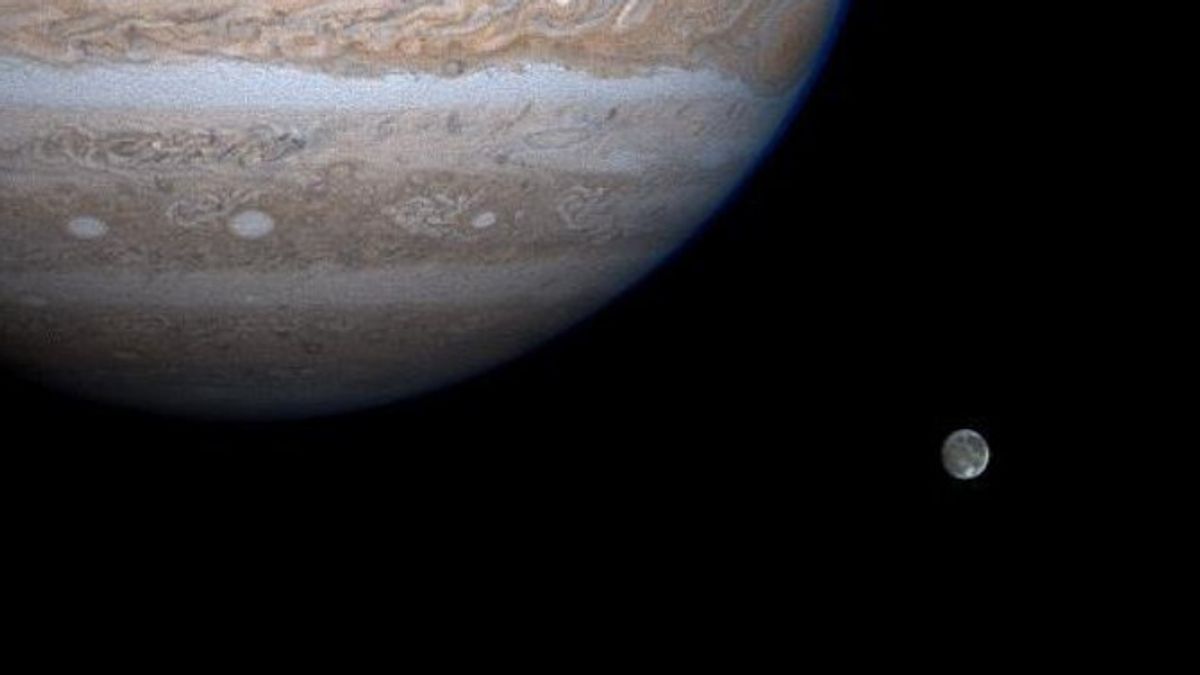JAKARTA - Juno, a NASA space satellite that has been orbiting Jupiter since 2016, has found an FM signal that is thought to have originated from one of Jupiter's moons, Ganymede. Is this a sign of extraterrestrial life?
According to an ABC4 News report, no such signal had previously been detected from the largest moon in the Solar System. It is reported that Juno detected the signal when it crossed the polar region of Jupiter's gas giant.
This region is where the magnetic field lines connect directly to the moon Ganymede. In scientific terms, this process is usually referred to as "decametric radio emission", the same principle as the reaction of Wi-Fi signals, as quoted VOI from Sputnik News, Wednesday, January 13.
Referring to the Britanica report, Jupiter radio emissions were discovered in 1955. Over the past 66 years, more and more discoveries have been made regarding the way these signals operate.
Despite the temptation to explain the signal and its relation to alien reality, Patrick Wiggins, one of NASA's representatives for Utah, confirmed to ABC4 News that this is not an emanation of extraterrestrial existence.
- https://voi.id/teknologi/24039/rencana-nasa-bawa-bebatuan-dan-tanah-dari-mars-ke-bumi
- https://voi.id/teknologi/26211/spacex-d Get-izin-dari-fcc-untuk-l Launch-sepuluh-satelit-starlink-ke-orbit-bumi
- https://voi.id/teknologi/25139/catat-fenomena-langit-yang-tak-boleh-diloskan-sepanjang-2021
[/ seea_also]
Wiggins also added that the presence of these signals is part of a natural function.
"A member of the Salt Lake Astronomical Society built an amateur radio telescope that can detect electromagnetic radiation from Jupiter," said Wiggins, referring to previous studies on the topic.
NASA scientists believe that the electrons cause the radio emissions detected by the Juno spacecraft. The incident lasted for five seconds when Juno passed at a speed of 50 km per second or 111,847 mph.
This phenomenon is still considered to be common, even though it takes place within a short period of time from a similar physical process that causes the aurora to occur on Earth. However, despite natural phenomena, Wiggins says he "believes in life out there and waits for evidence to reveal it."
NASA recently stated that Juno, who is slated to end its mission in July 2021, will experience a coincidental extension with the Mars InSight spacecraft.
"The Senior Review has validated that these two planetary science missions will likely continue to uncover new discoveries, and raise new questions about our Solar System," said Lori Glaze, director of NASA's planetary science division.
Now, NASA will continue its research on the gas giant and its interior structure, including Jupiter's magnetic field, until the end of Juno's life in 2025.
The English, Chinese, Japanese, Arabic, and French versions are automatically generated by the AI. So there may still be inaccuracies in translating, please always see Indonesian as our main language. (system supported by DigitalSiber.id)













